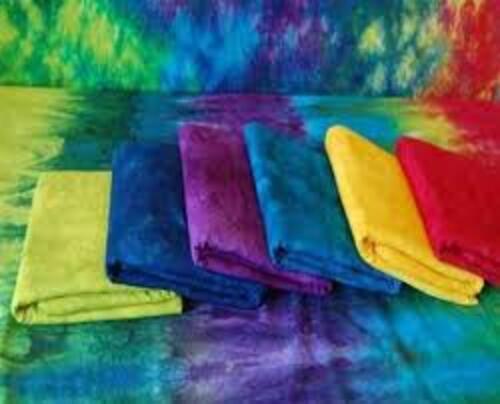
Reactive Dyes
100 INR/Gram
Product Details:
- HS Code 3204
- Grade Industrial Grade
- Usage Industrial
- Purity 98%
- Shelf Life 12 Months
- Physical Form Powder
- Storage Room Temperature
- Click to view more
X
Reactive Dyes Price And Quantity
- 500 Kilograms
- 100 INR/Gram
Reactive Dyes Product Specifications
- Industrial Grade
- Powder
- Industrial
- Room Temperature
- 3204
- 12 Months
- 98%
Reactive Dyes Trade Information
- Cash on Delivery (COD) Letter of Credit (L/C) Letter of Credit at Sight (Sight L/C) Cash Against Delivery (CAD) Telegraphic Transfer (T/T) Cash in Advance (CID) Cash Advance (CA)
- Middle East Asia Africa
- All India
Product Description
Reactive dyes are a type of textile dye that chemically bonds with the fibers of the fabric, resulting in a long-lasting and durable coloration. These dyes contain reactive groups that react with the fiber molecules, forming covalent bonds. This unique characteristic of reactive dyes allows for excellent color fastness and wash-fastness properties.
FAQ :
Q: What are reactive dyes?
A: Reactive dyes are a class of dyes that are widely used for coloring textiles, particularly natural fibers such as cotton, linen, and rayon. They contain reactive groups, typically either vinyl sulfone or monochlorotriazine, that chemically react with the hydroxyl or amino groups present in the fiber molecules. This chemical reaction forms a strong covalent bond, resulting in excellent color retention.
Q: Can reactive dyes be used on all types of fabrics?
A: Reactive dyes are primarily designed for use on natural fibers such as cotton, linen, rayon, and silk. These fibers have reactive groups that allow for a chemical reaction with the dye molecules. However, reactive dyes may not be suitable for synthetic fibers like polyester, nylon, or acrylic, as these fibers lack the necessary reactive sites for bonding with the dye molecules.
Q: How are reactive dyes applied to fabrics?
A: Reactive dyes are typically applied to fabrics through a dyeing process known as exhaust dyeing. The fabric is immersed in a dye bath containing the reactive dye, along with various auxiliaries and chemicals to promote dye absorption and fixation. The dye bath is heated, and the reactive dye molecules chemically react with the fiber molecules, forming stable covalent bonds.
FAQs of Reactive Dyes:
Q: What is the purity level of the Reactive Dyes product?
A: The purity level of Reactive Dyes is 98%.Q: What is the shelf life of the Reactive Dyes product?
A: The shelf life of Reactive Dyes is 12 months.Q: What is the recommended storage condition for the Reactive Dyes product?
A: Reactive Dyes should be stored at room temperature.Q: What is the grade of the Reactive Dyes product?
A: The grade of Reactive Dyes is Industrial Grade.Q: What is the physical form of the Reactive Dyes product?
A: Reactive Dyes is in powder form.Q: What is the recommended usage of the Reactive Dyes product?
A: Reactive Dyes is recommended for industrial use.Q: What is the HS code for the Reactive Dyes product?
A: The HS code for Reactive Dyes is 3204.Tell us about your requirement

Price:
Quantity
Select Unit
- 50
- 100
- 200
- 250
- 500
- 1000+
Additional detail
Mobile number
Email



 Call Me Free
Call Me Free
